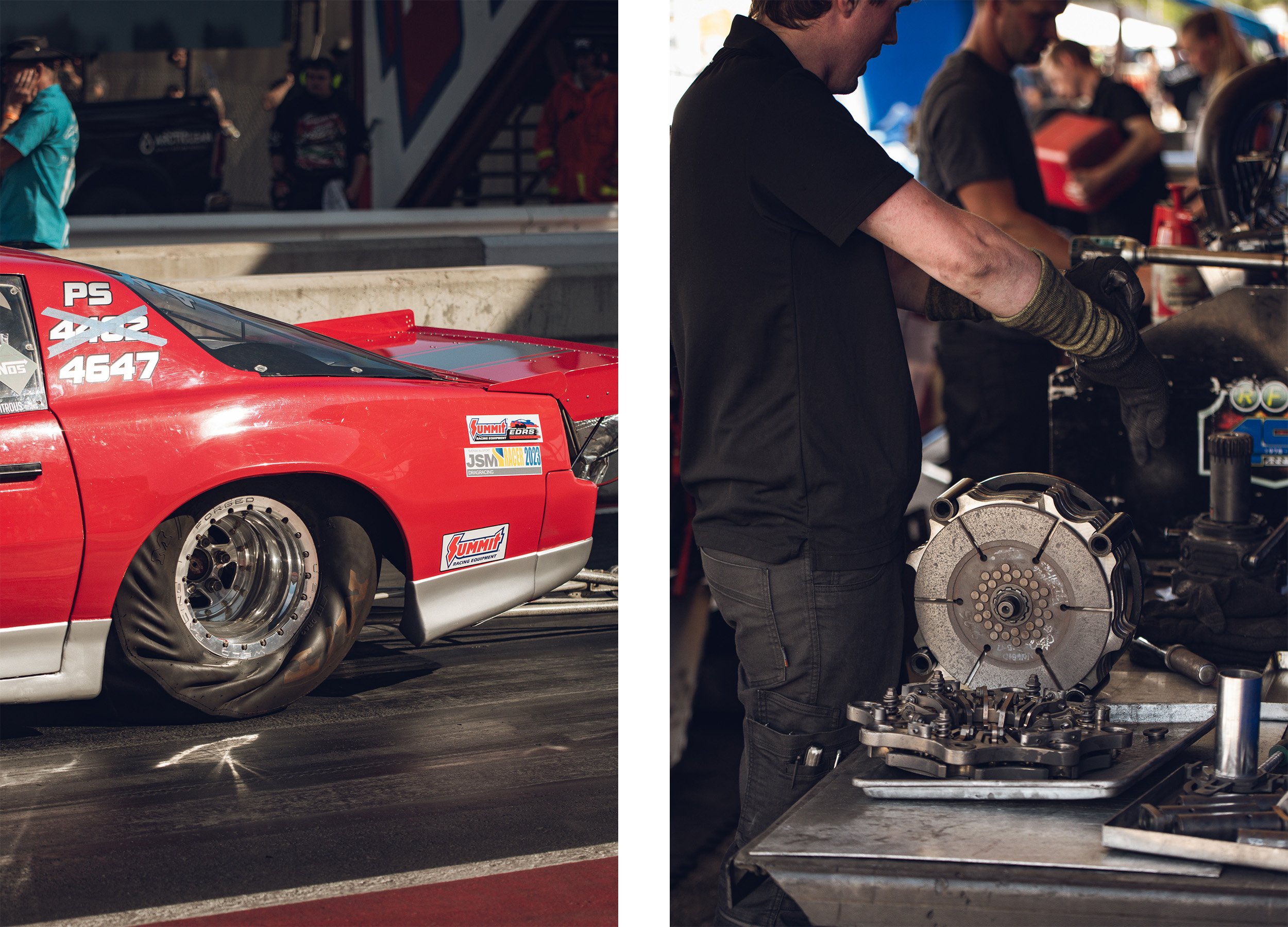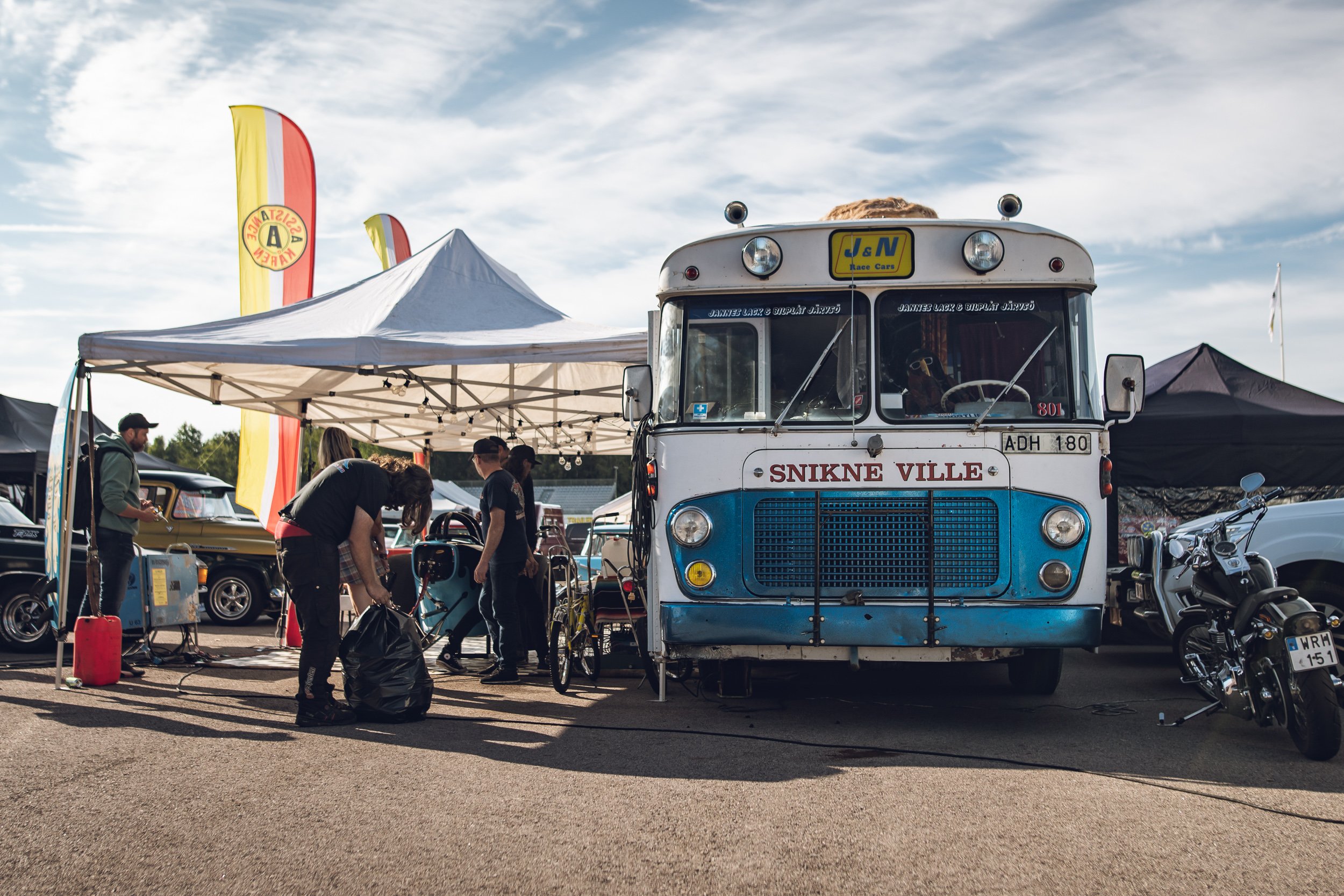Meguiar’s Drag Festival
A classic Alfa Romeo driving down an alpine pass or elegant ladies in fancy hats sipping Processo in the gardens of Vila d’Este: that’s the type of photos my frequent viewers may expect here. But sometimes I want to try something different and see the other faces of motorsport. While looking through the events organized in Sweden, I found the Meguiar’s Drag Festival organized at the Mantorp Park track. If there are roaring engines and people with passion, that should be interesting. That’s what I thought. Was it? Continue reading to find out.
Before the idea to go to Mantorp, came to mind, the only thing I knew about dragsters was that they are long, have big rear wheels, and use a parachute to brake. I’ve decided to look for some basic information. A quick Google search led me to Ida Zetterström, the Åland-based driver starting in the highest class: Top Fuel. A few videos on her YouTube channel gave me at least some basic information about what to expect during the event.
Ida Zetterström and her team
During the event, when I located her truck and mechanics, I was happy: at least a virtually known place. And not surprisingly, looking at the work of the team turned out to be much more interesting than the action on the drag strip.
Ida Zetterström
I was impressed by how much work needs to be done on the dragster powertrain just after one go, which lasts 3 or 4 seconds. Removal of engine heads and polishing of the valves? The most basic maintenance activity. What in road car can last 300,000 km or more here requires attention just after 400 meters, but that’s not surprising. The Top Fuel engine is assembled from purpose-built parts, but its concept is based on the Chrysler HEMI V8: construction well known from road cars. Considering that the power output of that motor is over 11,000 hp, it’s no wonder that parts undergo unbelievable stress and wear.
Basic service of Dennis Nilsson’s Dragster
One thing that may be seen as the most important part of the dragster is the clutch. After each run, a dedicated person removes it, checks it, and sets its parameters accordingly to the current conditions. Air and asphalt temperature, humidity, thickness of the rubber layer on the start, and other little environmental factors: everything matters. Huge attention is also paid to the tire pressures. Take a closer look at how they behave during the run. On the start, they are twisted, and their effective diameter is reduced. With the increasing speed of the vehicle, the tire’s diameter also increases and their width decreases. This effectively changes the gear ratio of the powertrain and works as the only gearbox of the vehicle.
Right: Clutch from Ida Zetterström’s Top Fuel Dragster
Next to Ida’s truck a second team, led by a fast lady, was located. The bright yellow machine was driven by Susanne Callin. She comes from a family with drag racing traditions and started competing in junior categories as early as the age of 10. As both teams belonged to RF Motorsport they used the same space surrounded by a rope, which allowed the spectators to look at their work but gave the staff proper conditions to work.
Susanne Callin
In another part of the depo Autoart Motorsport was located. The mechanics working on Dennis Nilsson’s machine were not protected from the curious audience by any means. Huge respect for their patience in working with so many people standing directly behind their backs.
Dennis Nilsson and his machine
There were obviously a few more teams competing in the Top Fuel category, but as their workshops were hidden from the eyes of observers, there was nothing interesting for me there.
Top Fuel dragsters were only one of the uncountable classes, but the only one in which I’ve managed to identify the main participants. That doesn’t mean that the smaller teams, competing in lower categories, were less interesting to watch. In the style category, for the most spectacular pre-start burnouts, the modified American cars would take the highest scores.
For many readers, it may be surprising what made the biggest impression on me. Obviously, the dragsters were interesting; the roar of engines staggering and the accelerations spectacular. But I’ve had the biggest smile while looking at the… buses. Yes, old busses used by many teams as their mobile garages, workshops, and campers. Have you ever heard of the brands Ajokki or Lier Karosseri? If you are not from Finland or Norway: most likely not.
Finding a garage to store the classic car, a workshop to service it, and tools to work on it is relatively easy. Things get much harder with classic utility vehicles like buses and trucks. Not only is storing them problematic, but even basic service procedures often require heavy, specialized equipment. I think those vehicles deserve lots of respect for their heavy work. They seem to be invisible to their contemporary viewers, but in fact they had a bigger impact on the automotive landscape of their time than the rare supercars. That’s why I was happy that those old buses are still alive and on duty. Generally, I’m a fan of keeping the classics close to original, but if reshaping them as mobile workshops is the only way to preserve them, I’m all in.
I’ve enjoyed my visit to the Drag Festival more than I expected. Incredible machines, passionate people, and the ground literally shaking from the roar of the engines. For most guests, those were the things to remember. For me, they were also important, but without the buses, it wouldn’t be the same.
























